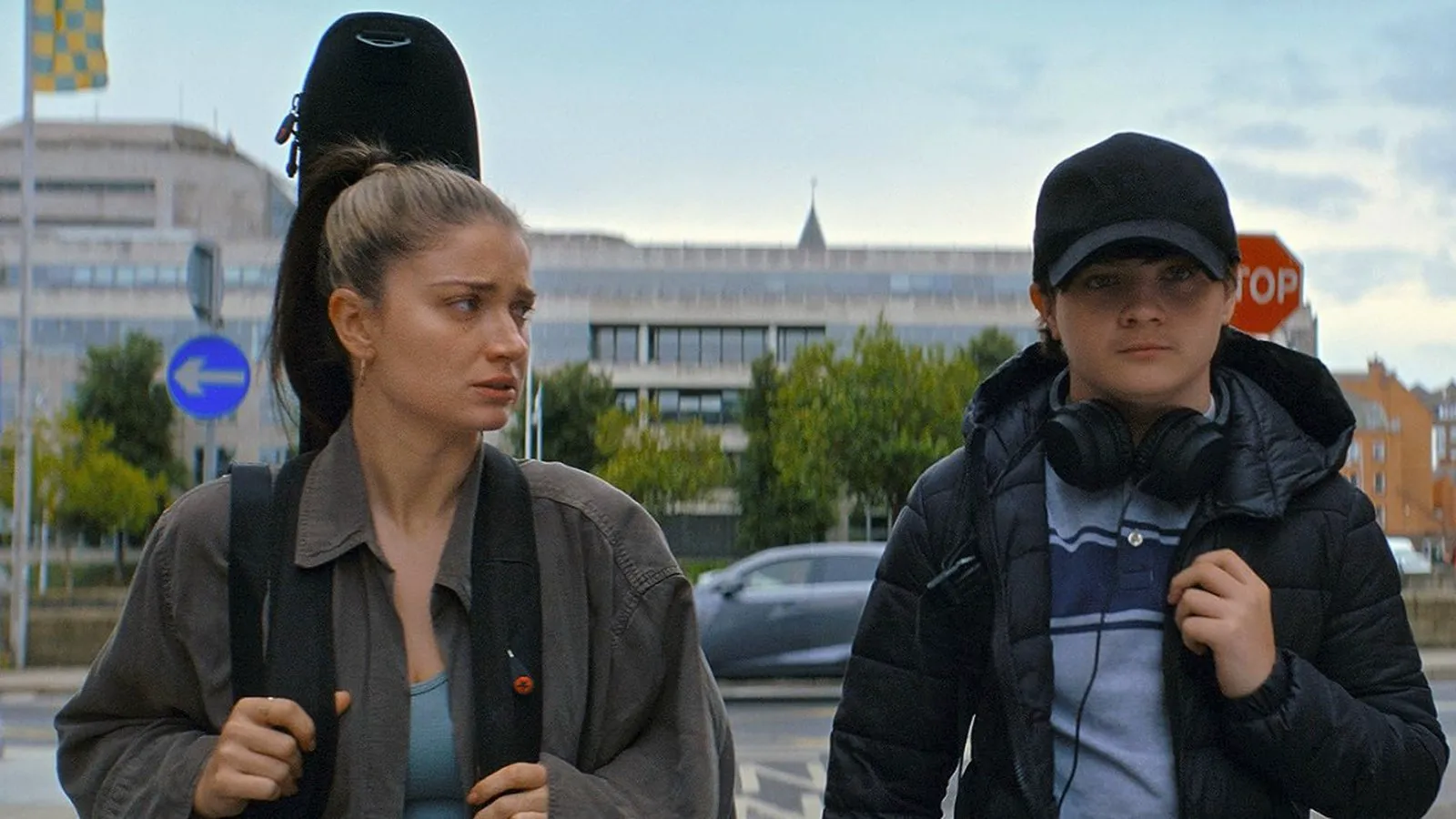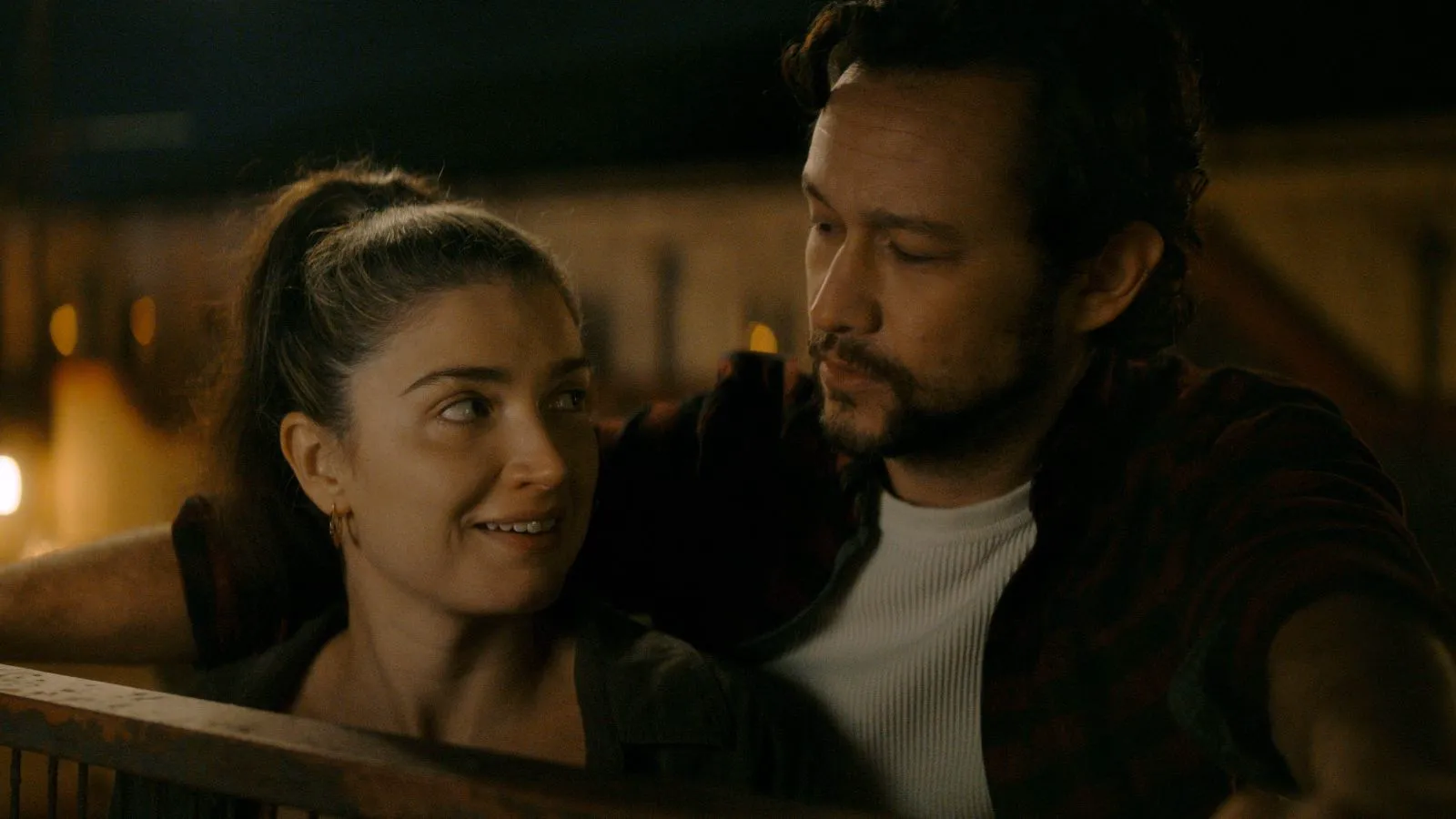Flora, a single mother (Eve Hewson), doesn’t quite see eye-to-eye with her teenage son, Max (Orén Kinlan). The young man has had more than one run-in with the police for minor offenses. While wandering through the city, Flora spots a guitar in a dumpster. She takes the find home and presents it to her child as a gift, hoping to spark a new hobby in the hooligan. But Max has no need for a guitar: the boy is interested in electronic music, mixing tracks on his laptop and dreaming of a synthesizer. So the instrument stays with Flora—a woman who is dissatisfied with her life and wants to change it for the better. The protagonist begins taking online music lessons from a tutor named Jess (Joseph Gordon-Levitt), searching for her own voice and gradually finding common ground with her son.

Eve Hewson as Flora in a still from “Flora and Son”
The Healing Power of Music: A Familiar Tune with a Fresh Melody
As one of the most musically inclined directors, John Carney doesn’t stray from the beaten path and continues to spread the magic of songs through the screen. Starting with “Once,” the filmmaker and bassist (Carney played in the rock band The Frames in the 1990s) tells the same story in different ways: music can heal, protect, and inspire. The Sundance melodrama “Flora and Son” upholds this tradition and adds to the author’s lyrical collection. Like Conor from “Sing Street,” Flora tries to impress those around her, and like Greta from “Begin Again,” she seeks herself in chords. Of course, there is a stranger who helps to look at the gray reality from a different angle: with Joseph Gordon-Levitt holding a guitar, you want to share all the secrets and sorrows that have accumulated inside.

Eve Hewson as Flora in a still from “Flora and Son”
Beyond Manipulation: The Organic Integration of Music
Musical films often suffer from emotional manipulation: characters start singing in moments of drama and emotional outbursts, and the viewer immediately feels like they are in a theatrical performance. John Carney’s works won’t make you waste tissues in vain. Year after year, the director manages to weave melodic passages into the plot so organically that singing seems like a logical continuation of heartfelt conversations. Flora communicates with Jess over the Internet: they are separated by kilometers. In moments of revelation, barriers are broken down, and the tutor from Los Angeles suddenly finds himself in a Dublin kitchen—this is how the director demonstrates the birth of closeness, which cannot be hindered by either impressive distances or even different tastes in music. Gordon-Levitt’s character will have to accept that his student’s favorite song is James Blunt’s “You’re Beautiful.”

Joseph Gordon-Levitt in a still from “Flora and Son”
Motherhood in Focus: A New Perspective
An important fact from Flora’s biography: she is a young mother. If earlier John Carney told stories about growing up and the merging of kindred spirits, now the main motive of the narrative is the hardships of motherhood. By the way, the director is not focusing on this for the first time: Markéta Irglová’s character in the film “Once” also raised a child, but then parenthood was not the fundamental line of the plot. Flora is a portrait of a far from ideal mother, who spends most of the film talking to her son in raised tones. An unexpected early pregnancy made adjustments to the life of a girl who hoped to be reborn after the birth of a child. But everything went wrong: instead of idyll, there is constant anger in her soul, instead of frank conversations with her son, there are endless squabbles. Lessons with Jess help to pause the chaotic life for a while and transfer to an island of calm, where there is no condemnation from acquaintances, arguments with a former lover, and whims of a child. Of course, it won’t be possible to clean up the mess with the help of making music. Carney is not so naive and optimistic. But the new hobby allows Flora to very smoothly build a bridge in communication with her son and start speaking in a language that is understandable to both of them—through music.
Carney’s Signature: A Familiar Yet Unique Melody
“Flora and Son” fits perfectly into the filmography of the Irishman. Dublin, the healing power of chords, kindred loners—the director uses roughly the same “components” again and again. It may seem that self-repetition looks tiring, but John Carney’s paintings, like songs from an album, are all about the same thing, but each sounds different in its own way.